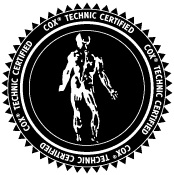Johnson Chiropractic Treats Post-Back-Surgery Back Pain with Cox® Technic for Pain Relief
Back surgery isn’t always required to relieve back pain. Adogwa and colleagues reported that less than 1% of 497,822 lumbar spinal stenosis or spondylolisthesis patients required back surgery. (1) What do the other 99% need? Pain relief. Reassurance and knowledge of their condition. Gentle treatment. A solid treatment plan. Johnson Chiropractic has such a plan for patients with Richmond post-back-surgery, failed back surgery syndrome, continued back pain (choose your term!) that incorporates safe, doctor-delivered, patient-involved chiropractic care via The Cox® Technic System of Spinal Pain Management.
BACK PAIN RELIEF AFTER BACK SURGERY
Certain researchers in the medical profession want to discard their descriptive phrase “failed back surgical syndrome” for “persistent spinal pain syndrome type 2.” For such patients with pain after back surgery with a laminectomy, discectomy, or fusion who pursued chiropractic spinal manipulation for relief, numeric pain rating scale (0-10/worst-pain scale) scores decreased from 6.6 to 0.6 and Oswestry Disability Index (0 to 100/worst-pain scale) scores dropped from 43.8 to 2.4. At 12 months’ post chiropractic care (multi-modal chiropractic care with flexion-distraction amid the treatments), 48% maintained their improvement, 42% had a recurrence, 10% were inaccessible for follow up. (2) A retrospective review of 32 cases of post-lumbar spine surgery pain patients noted numeric pain score changes from 6.4 to 2.3 (on a 10 point scale) for a 4.1 decrease in pain. No adverse events were documented for any of the postsurgical patients in this review with the mean number of treatments being 14. Chiropractic care included the delivery of Cox® flexion distraction. (3) A prospective study of 69 post-surgical continued pain patients who still had back pain after back surgery were treated by 15 chiropractors. All delivered care via protocols of the Cox® Technic System of Spinal Pain Management. 50% or greater relief of pain at the end of active care was reported for 81% of the patients. The mean number of days of care was 49 days;treatments was 11. At 2 years follow up, 56 patients were available. 78.6% of them had kept their pain relief of more than 50%. Mean pain relief at end of care was 71.6 and 70 at 2-years follow-up. 43% had not sought more care in 2 years. 32 patients had: 17 of them went through chiropractic manipulation, 8 had PT, exercise, injections, and medication; 5 had further surgery. (Bottomline: Greater than 50% relief of back pain following back surgery was reached for 81% of patients in 11 visits over 49 days.) (4) Richmond back pain sufferers who have already had back surgery may welcome these outcomes for themselves! Johnson Chiropractic is ready to help.
UNDERSTANDING OF BIOMECHANICAL CHANGES
To commit to a plan, all involved must understand what is going to happen to affect a change in pain. One study assessed the short-term effect of flexion distraction spinal manipulation on various spinal aspects of sufferers with lumbar degenerative disc disease (DDD). Intervertebral disc height was increased from 6.32 to 6.93. Back pain decreased from 69.17 to 48.48. Lumbar spine mobility recovered as it changed from 17.37 to 12.69 (bent over with fingers stretching toward the floor). Passive straight leg raise increased from 46.94 to 56.01. (5) These are desired and documented changes with gentle, safe Richmond chiropractic care.
CONTACT Johnson Chiropractic
Listen to this PODCAST with Dr. David Atiyeh on The Back Doctors Podcast with Dr. Michael Johnson as he describes the relief with The Cox® Technic System of Spinal Pain Management for a patient who’d gone through back surgery and still had back pain.
Schedule your Richmond chiropractic appointment now. Back surgery isn’t the only choice for many with back pain. And for those who have already undergone back surgery, the non-surgical approach with chiropractic may ultimately produce the pain relief you want.


